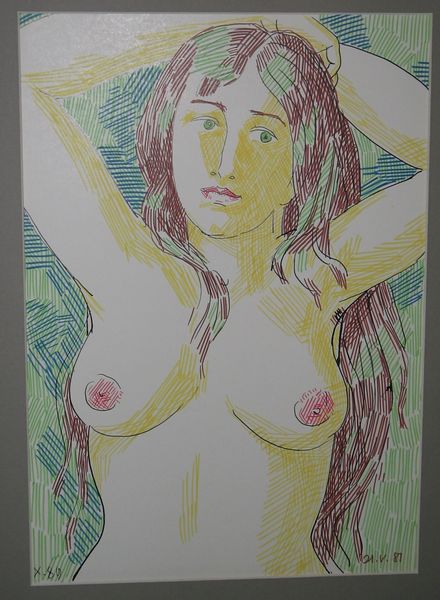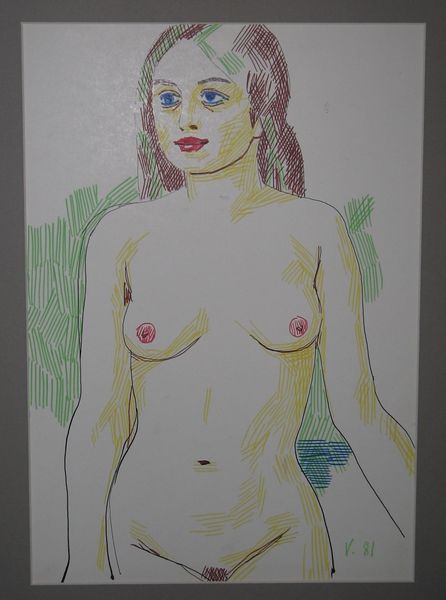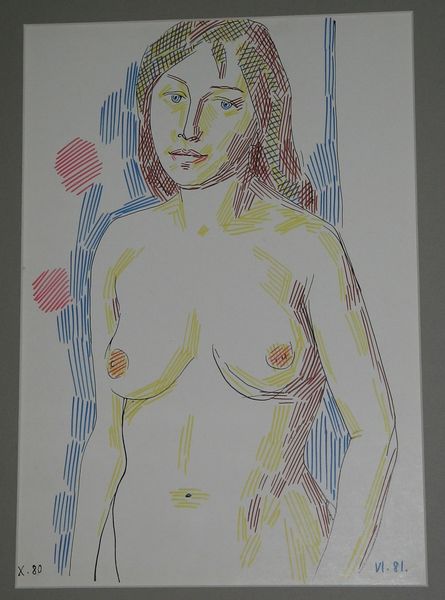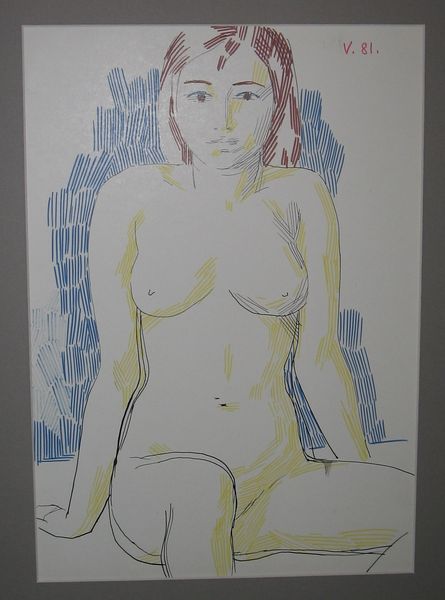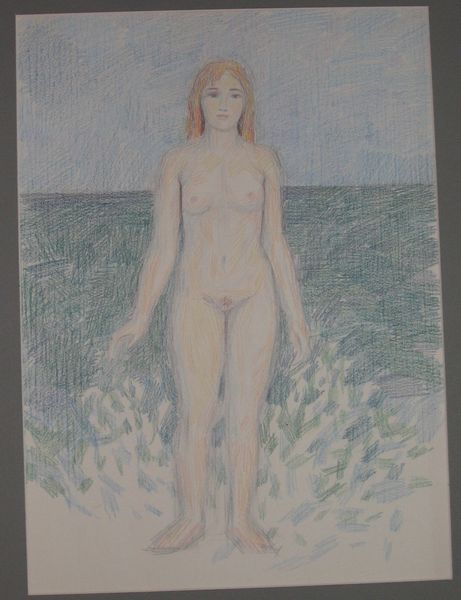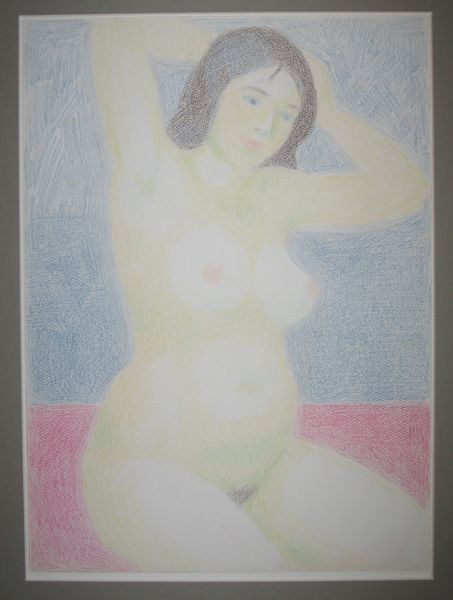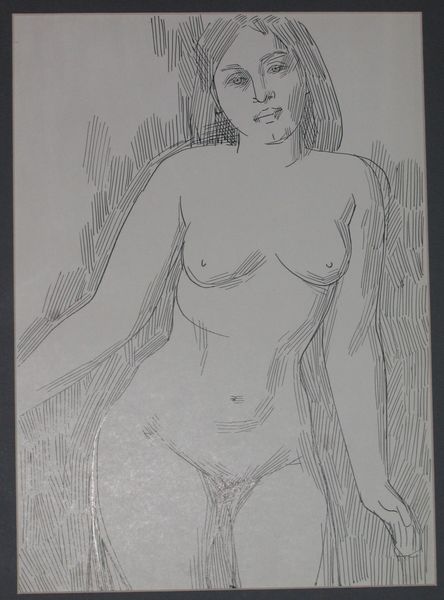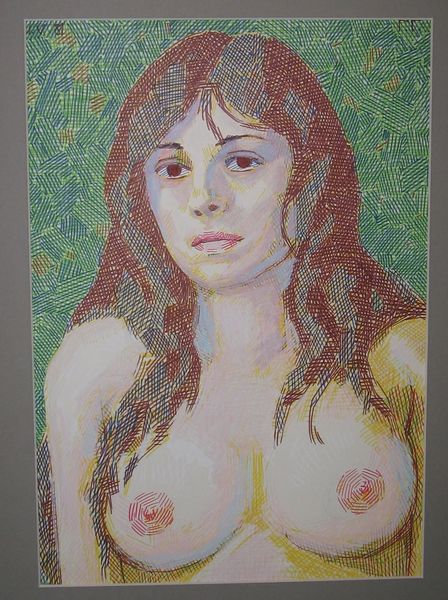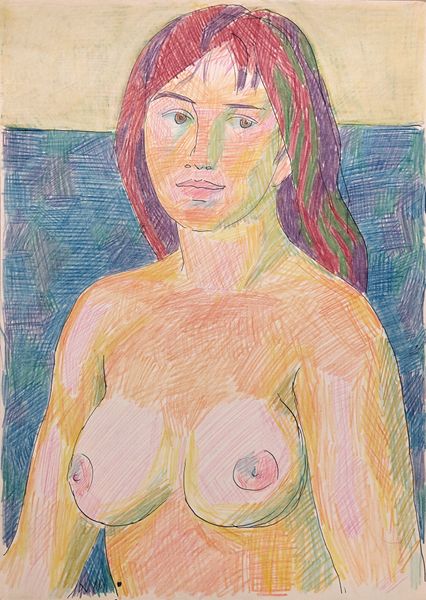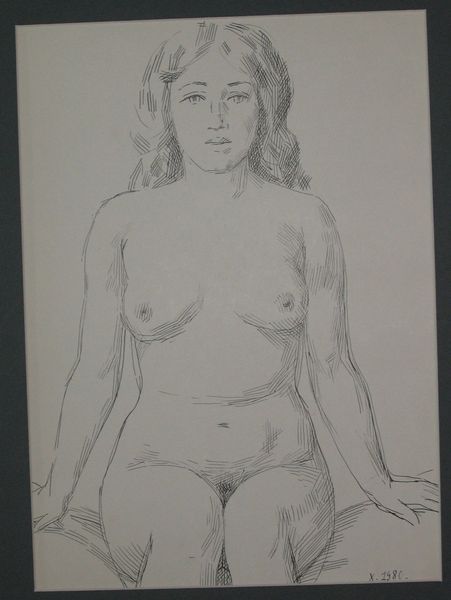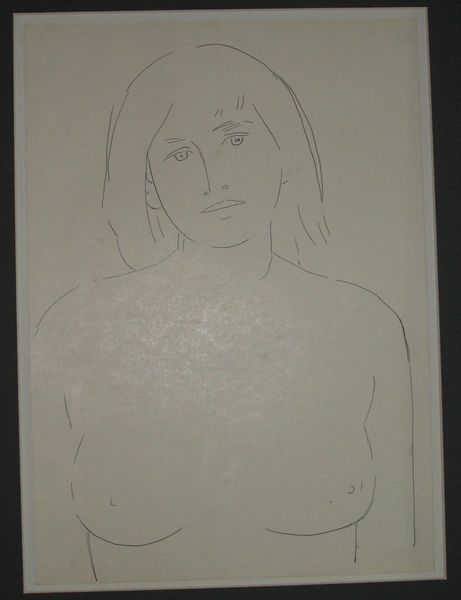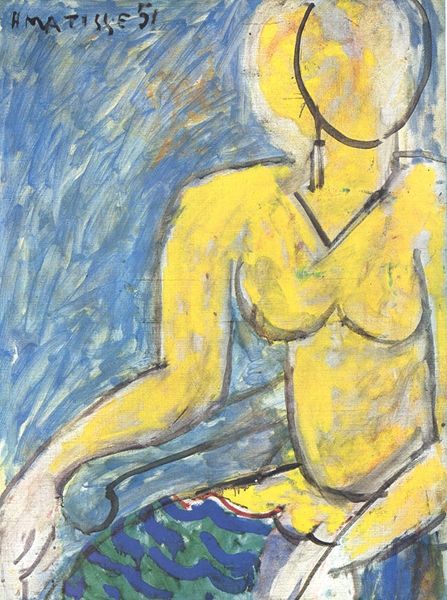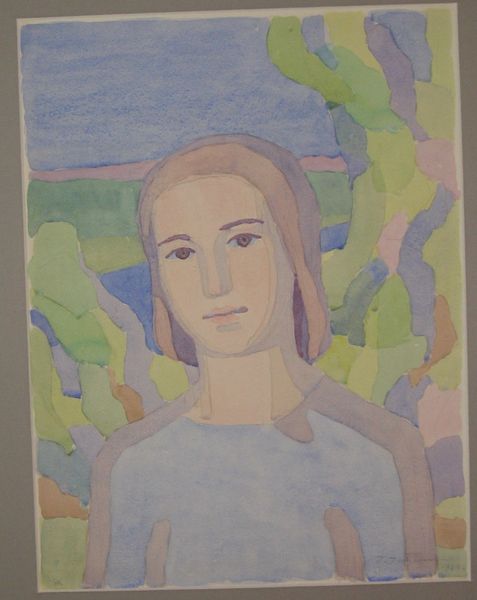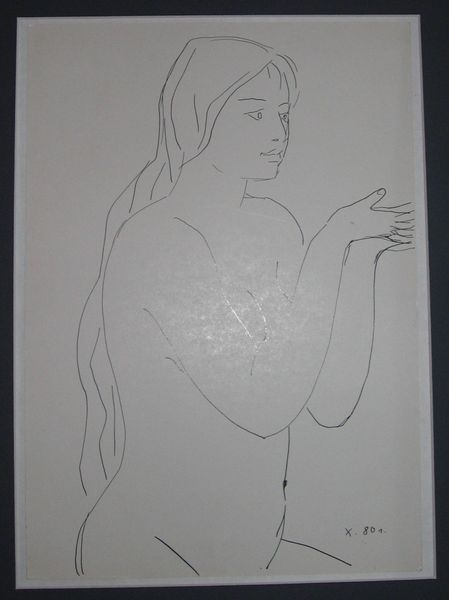
drawing, paper, pen
#
portrait
#
drawing
#
figuration
#
paper
#
pen
#
nude
#
modernism
Copyright: Hryhorii Havrylenko,Fair Use
Editor: Here we have Hryhorii Havrylenko's "Nude," a pen drawing on paper from 1981. There’s something almost clinical about it, yet the linework feels surprisingly tender. What do you see in this piece? Curator: I see a direct engagement with the complexities of representing the female form, especially within the context of the late 20th century. Consider how, historically, the "nude" in art often served to reinforce male gaze and patriarchal power. Now, in 1981, how might Havrylenko be challenging or subverting those traditions? The starkness, the seemingly unfinished quality... what do those elements convey to you? Editor: I guess I hadn't thought about it like that. It definitely feels less… idealized than a lot of nudes I've seen. Curator: Exactly. Perhaps the artist uses a modernist style to dismantle the idealised female form so commonly fetishized by society. Think about how the setting--we can infer the outdoor from the colors--subtly influences our understanding of vulnerability and perhaps even agency in this drawing. The choice to use pen and paper, simple materials, further reduces the piece down to bare honesty. Does it bring to mind for you how women, in the past and the present, claim or reclaim space for self-definition and empowerment? Editor: Yes, absolutely! I see it now, it really reframes how I perceive the gaze in the image. Curator: It makes you wonder whether the subject is viewed with respect for their identity. Art like this pushes us to reflect critically on not only how we interpret representations of the body but also who has the authority to represent it and for what purpose. Editor: This conversation completely changed the way I viewed this drawing! I see much more meaning now than when I started. Curator: Exactly! Nuance is key; analyzing through a variety of contexts can reveal greater insight.
Comments
No comments
Be the first to comment and join the conversation on the ultimate creative platform.
